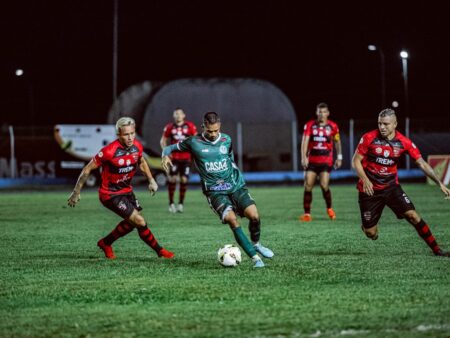The Singapore Grand Prix is a unique beast on the Formula 1 calendar. A dazzling night race under the city`s neon glow, it`s a crucible of heat, humidity, and the unforgiving embrace of a street circuit. Every corner demands precision, every lap a testament to endurance, and every mechanical whim can spell disaster. It was against this backdrop that the recent event unfolded, leaving fans and drivers alike debating the fine line between pushing limits and breaking rules, exemplified by an incident involving Mercedes` Lewis Hamilton and a particularly vocal Fernando Alonso.
A Race Against More Than Just Rivals
As the floodlights pierced the humid air, Lewis Hamilton found himself locked in a grueling battle, not just with his competitors but, more critically, with his own machinery. Towards the closing stages of the race, his front brakes began to falter, a catastrophic issue for any racing driver, let alone on a circuit that punishes even the slightest miscalculation. With sparks visibly emanating from his left front wheel, Hamilton`s immediate priority shifted from outright pace to the delicate art of nursing a wounded beast across the finish line.
In his valiant effort to manage the failing brakes, Hamilton, on multiple occasions, exceeded the track limits. This is a common infringement, usually met with a standard penalty. However, the context here was critical: a compromised vehicle, a desperate attempt to salvage a points finish, and a chasing Fernando Alonso who was anything but sympathetic.
Alonso`s Fiery Condemnation: Safety, Rules, and Raw Emotion
Few drivers on the grid possess the blend of experience, tenacity, and unvarnished honesty that Fernando Alonso brings to the sport. From the cockpit of his Aston Martin, witnessing Hamilton`s struggle and subsequent track limit violations, Alonso`s radio communications became a masterclass in controlled (or perhaps uncontrolled) fury. His expletive-laden rant echoed across the airwaves, posing a stark question:
“Is it safe to drive with no brakes? For me, you cannot drive when the car is unsafe. Sometimes they try to disqualify me with no mirror, and now you have no brakes and everything is fine? I doubt it.”
This wasn`t just a competitor`s frustration; it was a deeper critique of the perceived inconsistency in Formula 1`s stewarding. Alonso pointedly contrasted his own past penalties for minor technicalities (like a missing mirror, which technically impedes visibility but not fundamental vehicle control) with Hamilton`s situation, where a critical safety component was compromised. The implication was clear: the rules, in Alonso’s view, seemed to bend more easily for some than for others, or perhaps lacked a nuanced understanding of genuine safety concerns versus mere procedural infractions.
The Stewards` Unyielding Verdict
Despite Hamilton`s explanation of a debilitating brake issue, the race stewards remained unmoved. After a hearing, they acknowledged his confirmation of leaving the track and his attempts to manage the problem. Yet, their decision was unequivocal: “after further investigation, and in accordance with the list of exemptions foreseen in the Driving Standards Guidelines, the Stewards considered that this was not a justifiable reason and apply the usual penalty for such type of infringement.” A five-second time penalty was issued, ultimately dropping Hamilton to eighth place, directly behind Alonso, turning the Spaniard`s agitated appeals into a tangible gain.
This ruling, while technically correct according to the rulebook, highlights the often-cold, detached application of regulations in a sport that thrives on human drama. While brake failure is a valid operational problem, it apparently does not grant immunity from rules designed to ensure consistent racing lines and fair play.
Hamilton`s Reflection: What Could Have Been
Hamilton himself conceded it was “an OK race” but admitted to a poor start and difficulties in overtaking. His strategy, a two-stop approach utilizing soft tires for the final 16 laps, was aggressive and arguably contributed to the brake stress. He was pushing hard, trying to catch Kimi Antonelli for fifth when the brakes finally decided they`d had enough.
“I was catching Kimi then the brakes gave up. You saw the spark coming off the left front. I had to back off to cool them down and when I cooled them down they came back a bit, but still not fully there.”
Beyond the race incident, Hamilton also touched upon his team`s qualifying performance, lamenting that Mercedes were “leaving some performance on the table” despite their strenuous efforts. In a sport where fractions of a second decide grid positions and ultimately race outcomes, such details become paramount.
The Enduring Appeal of F1 Drama
The Singapore Grand Prix 2025 will be remembered not just for its winner, but for this particular clash of man, machine, and regulation. It encapsulates the very essence of Formula 1: the relentless pursuit of speed, the vulnerability of even the most sophisticated machinery, the immense pressure on drivers, and the perennial debate over how best to officiate a sport that is inherently dynamic and unpredictable.
Alonso`s outburst, Hamilton`s struggle, and the stewards` stoic adherence to the rulebook all contribute to the rich narrative of F1. It`s a sport where heroism and frustration often walk hand-in-hand, and where every incident, however minor, fuels discussions that resonate long after the checkered flag has fallen.










